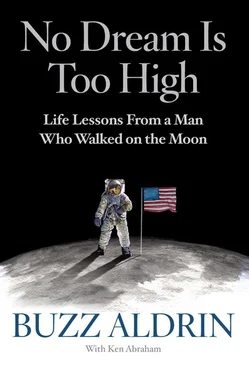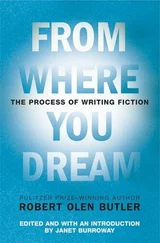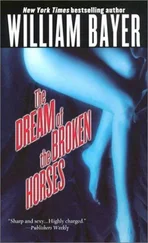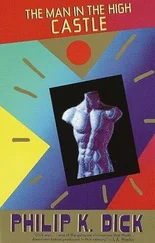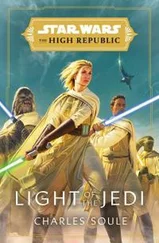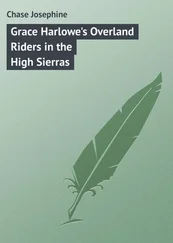I said to Sam, “It’s time to head back.” I looked out my cockpit window, expecting to see Sam behind me to the side, but I couldn’t spot him and he didn’t respond. That wasn’t like Sam, so I got worried.
“Sam, where are you?” I asked. “I can’t see you.”
Suddenly, through the familiar sound of Sam’s gunnery fire, rat-a-tat-tat; ehh-ehh-ehh-ehh , I heard Sam’s voice on my headset. “I’ll be right with you, Buzz!” More gunnery fire: Ehh-ehhh-ehhh-ehhhh . Clearly, Sam was engaged with the enemy somewhere in the skies nearby. I swerved my F-86 hard, turning around quickly, as my eyes searched for Sam’s plane. If my buddy was in trouble, I had to help him.
Next thing I knew, Sam was flying right beside me. We chased the MiGs as far as we dared, but they were too fast for us to catch up. We zoomed out of the danger zone and headed back to South Korea, watching our fuel gauges all the way.
When we finally got back to our base and landed, we got chewed out royally by our commanding officers. I didn’t mind the scolding. After all, there was no way I was going to leave my friend when he needed me most.
To me, that is one of the most important principles of life: Never leave your friends behind. Consequently, throughout my lifetime, I’ve tried to keep in touch with my buddies, even though it has not always been easy, because most of us have stayed quite busy. In times past, I’d burn up the telephone lines; these days, text messaging has become my preferred method of communication, a great way for me to stay connected with my friends. But don’t kid yourself. Keeping in touch requires intentionality. You must consciously make the effort to stay connected with your friends, or it won’t happen. You’ll gradually slip away from each other, like a married couple that once loved each other but allowed the sparks of passion and the flame of love to be snuffed out.
Time goes by and we all get caught up with daily responsibilities, priorities, and the tyranny of the urgent. It is easy to get so busy that we forget about those people who have played such important roles in our lives, so every so often, I will swing back to see how my friends are doing. It doesn’t take a lot to do that. Maybe a quick phone call or a text message, perhaps a letter or a card in the mail. But it is important to stay connected, because life gives none of us any guarantees. I’m proud to say that the West Point class of 1951 keeps in contact regularly. For instance, my friend and West Point classmate Jack Craigie and I have known each other since we were 18 years old. Today, with both of us past 86 years of age, we still make the effort to keep in touch.
I did my best to keep in touch with Sam Johnson, too. In 1966, while I was working on the Gemini program, Sam flew in Vietnam. During his 25th combat mission, he was shot down and was incarcerated in a North Vietnamese prisoner of war camp, a place so desolate, with such inhumane living conditions and treatment so despicable, that he later described it as “Alcatraz.”
During the war, many Americans back home wore bracelets reminding us of captured soldiers wallowing in the sweltering POW pigsties in ’Nam. I wore a metal bracelet with Sam’s name, rank, and serial number engraved on it, along with the date that he was shot down. It was a symbol of hope and solidarity with our troops. I wore that bracelet to the Moon and back.
Sam didn’t know that I had been on Apollo 11, because he had been kept in the dark in the Vietnamese POW camp. Even when he heard the news over a crackling radio in the prison camp that human beings from America had walked on the Moon, Sam’s Vietnamese captors tried to convince him that it never happened, that it was, in fact, the Russians who had landed on the Moon. Sam refused to believe what his tormenters were telling him. My good friend Sam endured seven years as a POW in Hanoi, including 42 months in solitary confinement. It wasn’t until after his release from the Vietnamese POW camp that Sam learned that his former wingman buddy had walked on the Moon.
Sam served our country in the U.S. Air Force for 29 years, flying with the precision demonstration team, the Thunderbirds, as well as on combat missions in Korea and Vietnam. Later he ran for office in the Texas state legislature, and then he went on to become a multiple-term U.S. congressman, serving the third district of Texas.
After years of separation, we reconnected, and we still keep track of each other to this day. I regard Sam as one of the best friends I’ve ever had and one of the best men I’ve ever known.
You never know how people you meet today will have an impact on your future. Another friend that I first met in Korea played a significant role in my future, because of his impact on the space program. His name was John Glenn, the Mercury program astronaut who in 1962 first orbited the Earth three times, which in the early days of America’s space program was a major accomplishment. John and I flew F-86 Sabre jets together in the waning days of the war, and he succeeded in shooting down three Russian MiGs near the Yalu River, one more than I did.
Regarding his initial spaceflight, John later quipped, “As I hurtled through space, one thought kept crossing my mind: Every part of this rocket was supplied by the lowest bidder.” He went on to become a U.S. senator representing his home state of Ohio. While still a sitting senator, at 77 years of age, John went back into space for a nine-day mission aboard the space shuttle Discovery , and to date he is the oldest person ever to travel into space.
John and I still share a passion for space exploration, although neither of us could have imagined such a thing when we first met in 1953. But your friends do rub off on you.
Serving my country in Korea was a marvelous time in my life. After chasing Soviet MiGs all day, my buddies and I would gather together and tell our stories. We were intensely competitive with each other, but we also shared a special camaraderie, much like the relationships I would have with NASA astronauts a few years later. It was an experience like iron sharpening iron, similar to our time at West Point, where we brought out the best in each other. Eventually—often after a few adult beverages—someone would break into a song. We had an entire repertoire of fighter pilot songs that I still sing sometimes, even after all these years. And when I sing those songs, in my mind, I’m right back there in Korea with all those great friends.
Besides stopping the Soviet-supplied communists from North Korea in their efforts to overrun South Korea, the war also created a fringe benefit for America that often goes unnoticed. That is: Most of the early U.S. astronauts were not veterans of World War II. Most of us were fighter pilots who flew during the Korean War. In addition to the missions flown by John Glenn, Neil Armstrong flew 78 combat missions in Korea. Wally Schirra flew 90 missions; Gus Grissom flew 100 combat missions over Korea; Jim McDivitt flew 145 missions! And of course, I flew 66 missions chasing MiGs.
As fighter pilots in Korea, we learned concentration under fire, how to stay calm in the face of dangerous situations, and how to make quick, life-or-death decisions. Beyond that, because we knew that we were really fighting the Soviets as well as the North Koreans, the war spurred a passionate competition between the Americans and the Russians that would carry over into the space race. We were not going to let those “Russkies” beat us in Korea, and we were certainly not going to let them get the upper hand on us in space.
* * *

YOU NEVER KNOW WHEN the next person you meet might be someone who impacts your life for the better, or someone to whom you can give a helping hand. Shortly after I moved to Houston to become part of the U.S. space program, I was visiting with my friend Ed White when we saw a guy out roller-skating on the cement behind Ed’s house.
Читать дальше
